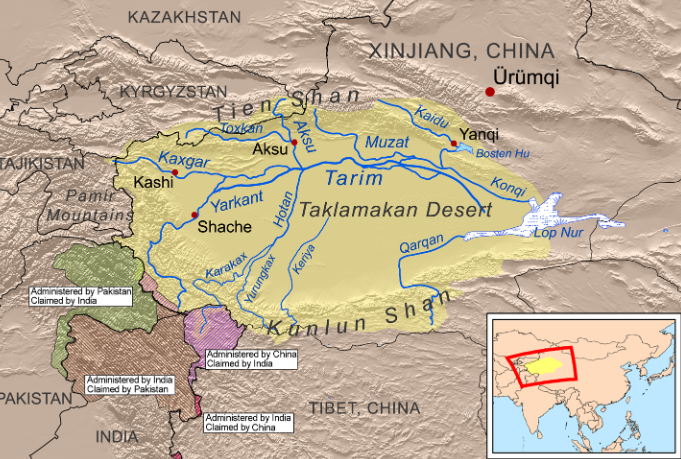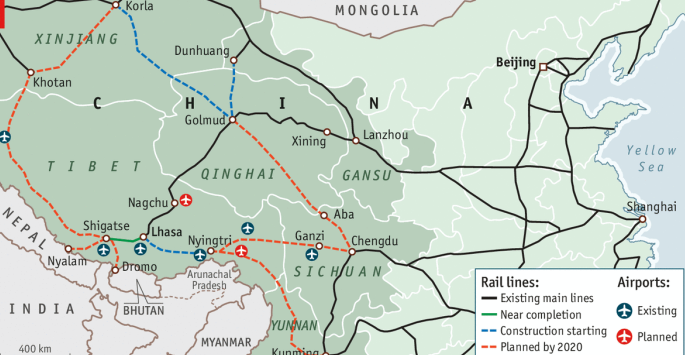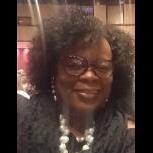-
Posts
3,840 -
Joined
-
Last visited
-
Days Won
119
richardmurray's Achievements
Single Status Update
See all updates by richardmurray
-
as a fellow truth telling writer, I realize it takes time for us to learn how to be commercial writers, a finesse must be learned that I haven't, that Rod Serling was able to learn on the go so to speak, that I think most of the most profitable writers today comprehend

An Early Run-In With Censors Led Rod Serling to ‘The Twilight Zone’
His failed attempts to bring the Emmett Till tragedy to television forced him to get creativeJackie Mansky
April 1, 2019
In August of 1955, Emmett Till, an African-American boy from Chicago was abducted, beaten, and shot while visiting family in Mississippi. A nation divided by race dug in its feet in the aftermath. While Jet magazine disseminated photographs from the open-casket funeral, showing the full mutilation of the 14-year-old’s corpse, another story played out in the courtroom. That fall, an all-white jury acquitted the two killers, both white, of all charges.
The miscarriage of justice proved a galvanizing point in the Civil Rights Movement. Rod Serling, a 30-year-old rising star in a golden age of dramatic television, watched the events play out in the news. He believed firmly in the burgeoning medium’s power for social justice. “The writer’s role is to be a menacer of the public’s conscience,” Serling later said. “He must have a position, a point of view. He must see the arts as a vehicle of social criticism and he must focus the issues of his time.”
Soon after the trial concluded, Serling, riding off the success of his most well-received teleplay to date, felt compelled write a teleplay around the racism that led to Till’s murder. But the censorship that followed by advertisers and networks, fearful of blowback from white, Southern audiences, forced Serling to rethink his approach. His response, ultimately, was “The Twilight Zone,” the iconic anthology series that spoke truth to the era’s social ills and tackled themes of prejudice, bigotry, nuclear fears, war, among so many others.
Tonight, “The Twilight Zone” enters another dimension led by Jordan Peele. Peele has emerged as one of Hollywood’s most interesting auteurs, using a toolbelt of humor, horror and specificity to explore the human experience, especially through the construct of race. That through line can be found throughout his body of work from the witty sketch-comedy episodes of “Key & Peele” to his latest offering, the box-office record-setting Us. His perspective makes him a natural choice to step in as host and executive producer of the buzzy reboot coming to CBS All Access.
But unlike Serling, Peele will also be able to take the franchise in a direction that the dramatic writer wanted to go but was never able to get past the Cold War censors during the original show’s run from 1959-1964. For all that his Oscar-winning directorial debut Get Out, for instance, shares the DNA of “The Twilight Zone,” Peele’s allegory about black people in white spaces is direct in a way that Serling could never have been. To get on air, the story would have been forced to compromise in some way—camouflaging its intent by setting the story on a distant planet or another time period. Peele commented on that in a recent interview < https://www.nytimes.com/2019/03/26/arts/television/jordan-peele-twilight-zone.html > with Dave Itzkoff of the New York Times: “It felt like, if Serling were here, he’d have a lot to say and a lot of new episodes he couldn’t have written back in his time,” he said.
Few examples tell Serling’s struggles better than his attempt to bring the Till tragedy to television. Already, when he first pitched the idea to the advertising agency representing the U.S. Steel Hour, an hour-long anthology series on ABC, Serling was pre-censoring himself. Aware that he’d have to make concessions to get the script on screen, he sold the representatives on a story of a Jewish pawnbroker’s lynching in the South. When the idea was greenlit, Serling worked on that script as well as an adaptation for Broadway, where he knew he would have the freedom to tell Till’s story more directly, centering that plot around a black victim.
But Serling misjudged just how restrictive 1950s television could be. After he mentioned that his script-in-progress was based on the Till murder trial in an interview with the Daily Variety, papers around the country picked up the scoop. Thousands of angry letters and wires from the likes of white supremacist organizations followed, threatening both Steel Hour and ABC, who quickly capitulated and ordered changes to Serling's script. Recounting the incident several years later during an interview < https://books.google.com/books?id=C_Z1DwAAQBAJ&pg=PA137&lpg=PA137&dq=to+suggest+an+unnamed+foreigner,+then+the+locale+was+changed+from+the+South+to+New+England,+and+Im+convinced+they+would+have+gone+up+to+Alaska+or+the+North+Pole+using+Eskimos…except+I+suppose+the+costume+problem+was+of+sufficient+severity+not+to+attempt+it.&source=bl&ots=HUvHNRKWDW&sig=ACfU3U0-tiDUmMXyHM37Ig7rlkS6entsrQ&hl=en&sa=X&ved=2ahUKEwjoxrPwkKbhAhUGj1kKHT0zBAcQ6AEwAHoECAkQAQ#v=onepage&q&f=false ;
“Station owners and advertising agencies were afraid to offend any segment of their white audiences, even racists, for fear of losing income,” explains < https://www.nytimes.com/2002/10/20/arts/television-radio-battling-the-bottom-line-in-tv-s-earliest-days.html > journalist Jeff Kisseloff, author of The Box: An Oral History of Television, 1920-1961. As television gained a national audience in the 1950s, the creative freedoms that permeated the earliest days of the medium were quickly being pushed out in an attempt to sell to a white consumer market. Black purchasing power wasn't taken into account. “[A]s late as 1966, one study indicated that black performers constituted 2 percent of the casts of commercials,” according to research < https://books.google.com/books?id=PP1tHJN8h6AC&printsec=frontcover&dq=james+l+baughman&hl=en&sa=X&ved=0ahUKEwjoxsr8o6fhAhUMxVkKHdQhAdMQ6AEIKjAA#v=onepage&q=james l baughman&f=false> by media theorist James L. Baughman. The great Nat King Cole surmised the situation at hand succinctly, “Madison Avenue is afraid of the dark.”
When Serling's teleplay,“Noon on Doomsday,” finally aired on April 25, 1956, any hint of the South was removed from the plot; not even a Coca-Cola bottle could appear, lest viewers invoke the idea of the region. Instead, the opening crawl made clear that the story was set in New England. (Really, all that mattered was that it was set far away from the South: “I’m convinced,” Serling said in the Wallace interview, “they would have gone up to Alaska or the North Pole…except I suppose the costume problem was of sufficient severity not to attempt it.). The victim was now depicted as an unknown foreigner. “Further,” Serling fumed, “it was suggested that the killer in the case was not a psychopathic malcontent but just a good, decent, American boy momentarily gone wrong…”
It should be noted that some details of this ordeal might be exaggerations on Serling’s part or conflations of the two scripts he was working on simultaneously for stage and screen; Rod Serling Memorial Foundation board member Nicholas Parisi cautions in his recent biography of Serling that “a good deal of myth has crept into the narrative surrounding the production of ‘Noon on Doomsday.’” For instance, the Jewish Southerner that Serling said was initially cast as the victim, he writes, actually appeared in a draft of the theatrical script, instead. The unknown foreigner was already in Serling’s initial teleplay draft.)
Whatever the case, by the time everything was said and done, the message that aired in the teleplay of “Noon on Doomsday” was thin and garbled. When Serling read the New York Times’ review of it, he realized just how so. In a letter to a friend, he wrote: “I felt like I got run over by a truck and then it back[ed] up to finish the job.” Meanwhile, his relationship with the Theater Guild, whom he’d sold an option of the Broadway script and also produced the teleplay, had soured. Despite attempts to salvage it, the theatrical version of the story was not performed or published in his lifetime.
But Serling wasn’t done with the Till tragedy. Once again, this time for CBS’ “Playhouse 90” series, he attempted to tell the story of a lynching in a small town, this time setting the plot in the Southwest. After haranguing from CBS executives, Serling had to move the story back 100 years, erase any direct allusion to Till, as well any black and white racial dynamics in the script. Unlike “Doomsday,” however, this production, titled “A Town Has Turned to Dust,” still communicated, if more universally, Serling’s desired message on prejudice and hatred. The closing soliloquy, delivered by a journalist signing off a telegram to his editor, already had the feel of the best of the “Twilight Zone” epilogues Serling himself would go on to deliver:
Dempseyville got rain tonight for the first time in four months. But it came too late. The town had already turned to dust. It had taken a look at itself, crumbled and disintegrated. Because what it saw was the ugly picture of prejudice and violence. Two men died within five minutes and fifty feet of each other only because human beings have that perverse and strange way of not knowing how to live side by side, until they do, this story that I am writing now will have no end but must go on and on.
Scholar Lester H. Hunt argues that the lessons Serling took from the experiences of “Doomsday” and “Dust” laid the groundwork for what was to come in “The Twilight Zone.” Based on the censors, Hunt writes in an essay < https://books.google.com/books?id=qOfuslNpHE4C&printsec=frontcover&dq=twilight+zone+rod+serling&hl=en&sa=X&ved=0ahUKEwjA7ILt0KLhAhXpx1kKHQe8C_oQ6AEIWDAI#v=onepage&q=twilight zone rod serling&f=false > , “[Serling] changed, rather abruptly and driven by the pressure of circumstance, from an artist who thought it was his highest calling to comment on the problems of the day by depicting them directly to one who commented on principles and universals involved, not merely in the problems of the moment, but of human life itself.”
Or, as Serling himself later put it, “If you want to do a piece about prejudice against [black people], you go instead with Mexicans and set it in 1890 instead of 1959.”
Serling had also learned his lesson from his earlier dust-up with the Daily Variety. In his interview with Wallace, he demurred about whether or not his new show would explore controversial themes. “…[W]e're dealing with a half-hour show which cannot probe like a [Playhouse 90 production], which doesn't use scripts as vehicles of social criticism. These are strictly for entertainment,” he claimed. After Wallace followed up, accusing him of giving up “on writing anything important for television,” Serling easily agreed. “If by important you mean I'm not going to try to delve into current social problems dramatically, you're quite right. I'm not,” he said.
Of course, that couldn’t have been further from the case. His missteps with adapting the Till tragedy for television forced him to realize that to confront issues of race, prejudice, war, politics and human nature on television he had to do so through a filter.
The Twilight Zone is actually a term Serling borrowed from the U.S. military. Serling, who served as a U.S. Army paratrooper in World War II, an experience that marked many of the stories he went on to write, knew it referred to the moment a plane comes down and cannot view the horizon. As the title of the anthology drama, it spoke to his mission for the show: to be able to tell bold stories about the human conditions on screen by obscuring the view somehow.
As Peele steps into Serling's iconic role, he does so knowing he has a chance to speak more directly to those concerns. The veil that held Serling, who died in 1975, back has lifted somewhat, opening up the narrative for bolder stories to now enter “The Twilight Zone.”
ARTICLE
IN AMENDMENT
to see some pretty photos, I wish my underater train design could had been implemented , fortunate engineers
China completes Rail Line around Taklamakan Desert on the old Silk Road
By baronmayaChina has finished the new Hotan-Ruoqiang rail line and completed the circle around the huge Taklamakan Desert on the old Silk Road.
Ancient Silk Road travelers cursed China’s largest desert as Takla Makan, an ominous Persian-Turkic expression that translates as “Enter and you may never Return.”

Undeterred by its sandstorms and merciless terrain in the oblong basin north of Tibet’s glacier-packed peaks, China has announced the completion of the final section of a Taklamakan Desert railway loop line, the world’s first to encircle a desert.
Elsewhere, China is constructing Maglev train systems capable of hurtling passengers and freight hundreds of miles per hour, including an underwater route near Shanghai to reach tiny offshore islands.
These latest railways increase China’s military, industrial, agricultural and political prowess, amid escalating rivalry with the USA over each nation’s capabilities.

The Taklamakan Desert railway loop also allows Beijing greater access to rebellious Xinjiang province’s Kashgar, a distant southwestern city near vulnerable borders with India, Pakistan, Afghanistan and Kyrgyzstan.
Kashgar and elsewhere in Xinjiang comprise a large population of restive Muslim Uighurs of ethnic Turkic origin.
The railway loop also enables exploitation of the Tarim Basin oilfield, estimated to cover 350,000 square miles, or 560,000 square kilometers, under the Taklamakan’s huge dunes and shifting sands.
According to China’s official Xinhua news agency, workers tighten the screw of the rail and finished the final Hotan-Ruoqiang link on September 27, 2021. From the oasis town of Hotan, an existing line continues to Kashgar.

This railway line runs through the southern edge of the Taklamakan Desert,” said Yang Baorong, chief designer of the final 513-mile section. Sandstorms pose a serious threat to railway construction and operation, as tracks can be buried underneath.
Tickets to use this newest link are expected to go on sale in June 2022, allowing travelers to ride the entire loop to encircle the Germany-sized Taklamakan, which is second only to the Sahara Desert in size.
The Taklamakan loop is hailed by Beijing as a way to help the region, especially Xinjiang’s impoverished southern edge near northern Tibet.
That edge includes an existing Golmud-Korla Railway which now joins the new loop. Other trains already go south from Golmud to Lhasa in Tibet, and future plans envision continuing those tracks south from Lhasa to Nepal’s capital Kathmandu.
More than 2,000 years ago, Bronze Age inhabitants buried mummies in the Taklamakan, according to a French-funded excavation. As the desert expanded southward, ancient kingdoms crumbled into ruins or were buried.
These included the flourishing Loulan kingdom on vast Lake Lop Nur, before its water evaporated in the 5th century.
By constructing a railway around the desert, Chinese engineers have recreated Silk Road caravan routes that linked China and Europe by skirting the Taklamakan’s rim.
Buddhist monks also trudged those routes spreading their religion east, until medieval sea routes replaced hazardous overland treks to East Asia.
The Taklamakan Desert parches 124,000 square miles and is about 600 miles east to west.

It bulges up to 260 miles across, flanked by the snow-capped Tian Shan range on the desert’s north and the Kunlun Mountains along its southern curve. Rugged Pamir peaks form its western ridge.
The railway had to cross, or route around, elevations up to 5,000 feet. Grass grids were laid across 165 million square feet of dunes which were virtually devoid of plant life, officials said.
Anti-desertification programs planted 13 million seedlings. In the harshest, most unpredictable zones – battered by sandstorms and smothered by swollen dunes – engineers designed lengthy bridges above chaotic sand.

Closer to Beijing meanwhile, a Maglev train project is starting in Shanxi, a north-central province. Magnets allow Maglev train carriages to float without wheels.
The high-speed train uses superconducting magnetic levitation technology to disengage from the ground to eliminate frictional drag.
This Maglev uses “a near-vacuum internal duct line to dramatically reduce air resistance, to achieve travel speeds of more than 1,000 kilometers-per-hour.
China already boasts the world’s fastest commercial Maglev on a 19-mile route in Shanghai, linking Pudong Airport to an urban metro system on the city’s edge within seven minutes, at up to 268 mph.
Nearby, a bullet train is preparing to zip under the sea at 155 miles-per-hour. Construction is well underway,” the UK-based website IFL Science reported in May 2021.

It would be “the world’s first underwater bullet train, which would extend nationally from Ningbo, a port city near Shanghai, to Zhoushan, an archipelago of islands off the east coast.
Covering a 47.8-mile stretch of almost entirely newly-built railway, the new route will include a 10-mile underwater section.
Verified post
https://weibo.com/2286908003/LxXRGg1aUArticle
https://cosmoschronicle.com/china-completes-rail-line-around-taklamakan-desert-on-the-old-silk-road/








.thumb.jpg.ed52910791d00308abb8c218695bec88.jpg)


